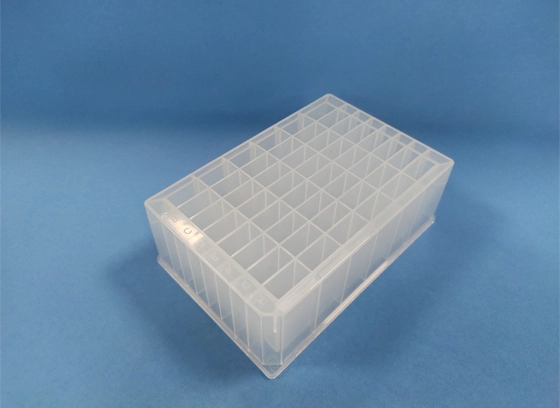Types of 48 Wells Plate
-
4.8ml, V-bottom and U-bottom are both available, low retention is acceptable.Read More
Yes, a 48-well plate can be centrifuged. In fact, centrifugation is a common technique used in many laboratory experiments and procedures to separate molecules and particles based on their size, shape, and density. Centrifuging a 48-well plate can allow for quick and efficient separation of the contents in each well, enabling researchers to collect and analyze samples with greater accuracy. It is important to follow proper guidelines and protocols of the 48 well microplate and centrifuge to ensure the safety of both the operator and the samples being centrifuged.
Yes, a 48-well plate can be used for high-content screening (HCS). While larger format plates such as 96- and 384-well plates are typically used in HCS due to their higher throughput capabilities, 48-well plates can still be a useful tool for screening small numbers of samples or when working with limited amounts of cells or reagents. Additionally, 48-well plates may be preferred in certain experiments where higher volumes per well are required or when cell clumping or debris is a concern. Overall, while 48-well plates have some limitations in terms of scalability, they can still be a valuable option for conducting HCS experiments.
Our 48 Well PCR Plate has good resistance to most commonly used chemical reagents and solvents, but is not resistant to some strong solvents such as acetone and chloroform. When selecting and using PCR plates, please contact our sales representative to request a detailed chemical compatibility chart.
For this 48-well microplate, we can provide the following common customization services:
1. Material selection
Different materials: In addition to the common polypropylene (PP), other materials such as polystyrene (PS) or polycarbonate (PC) can also be selected to meet specific chemical resistance or mechanical strength requirements.
Sterile processing: Provide sterile or non-sterile options, choose according to experimental needs.
2. Orifice plate design
Hole depth and hole volume: Customize the depth and volume of the hole according to experimental needs.
Hole Shape: Different hole shapes are available, such as round, square or tapered, to suit different experimental applications.
3. Surface treatment
Hydrophilic or hydrophobic treatment: Carry out surface hydrophilic or hydrophobic treatment according to experimental needs.
Low or high binding surfaces: Provide low or high protein binding surface treatments to suit different biomolecule experiments.
4. Colors and markings
Color selection: Provide PCR plates in different colors to easily distinguish between different experiments or samples.
Marking and Numbering: Customize markings, numbers or barcodes on plates for easy sample management and tracking.
5. Sealing options
Sealing film: Provide different types of sealing films, such as transparent film, aluminum foil film or breathable film, to adapt to different experimental needs.
Sealing method: Provide heat sealing, pressure sealing or adhesive sealing options.
6. Packaging and labeling
Customized packaging: such as individual packaging, batch packaging or sterile packaging.
Label customization: Customize labels on packaging, including customer identification, batch number, production date and other information.

Thank you very much for your interest in Yikang-Med!
Our service does not end with the sale of the products, pls fill out below form and we will answer your questions and feedback as soon aspossible.
Contact us now for sorts of pipette tips and other medical consumables!